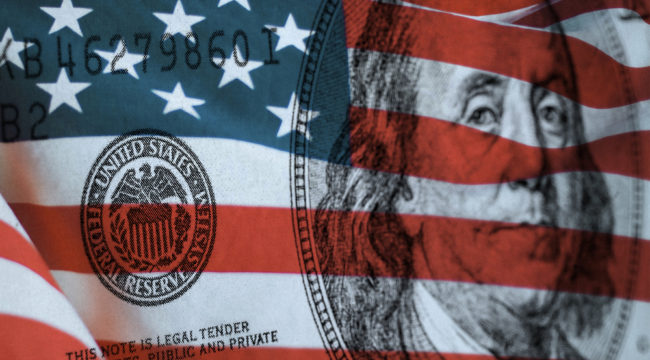Is the Fed Repeating “The Mistake of 1937”?
The esteemed brothers and sisters of the Federal Reserve raised interest rates 0.25% yesterday.
It was the fourth rate hike since December 2015… and the third in six months.
Janet Yellen has officially taken to the warpath.
Phoenix Capital:
… the Fed is embarked on a serious tightening cycle. One rate hike can be a fluke. Two rate hikes could even be just policy error. But three rate hikes means the Fed is determined.
But is the Fed repeating “the mistake of 1937”?
Stricken by the Crash of ’29, the American economy was climbing out of its sickbed by 1936.
Annual GDP growth — real GDP growth — was rising steadily.
Unemployment was falling, from its 25% high to 14%.
But by 1936 the Federal Reserve grew anxious, anxious that it was incubating inflation… that its previous loose monetary policy had healed enough.
It feared any more could start a fever.
They thought the patient could now steam under his own power.
And it was time to return to “normal.”
Christina Romer, former chair of the Council of Economic Advisers, in The Economist:
In 1936 the Federal Reserve began to worry about its “exit strategy.” After several years of relatively loose monetary policy, American banks were holding large quantities of reserves in excess of their legislated requirements. Monetary policymakers feared these excess reserves would make it difficult to tighten if inflation developed or if “speculative excess” began again on Wall Street.
We can’t help but ponder… don’t these conditions suggest something of today’s? Maybe a bit?
The 1936 Fed decided to tighten.
But the patient wasn’t as hale and hearty as the medical men assumed. And it was soon horizontal again, sick.
Real GDP dropped 10% between May 1937 and June 1938. Unemployment rose from 14% to 20%.
The recession-within-a-depression was America’s third-largest downturn of the 20th century.
The Fed reopened its medical bag in 1938… and the recession ultimately ended.
But Romer warns that the 1937 example “provides a cautionary tale.”
The Fed wanted to return to “normal” — just like today’s Fed says it wants to return to “normal.”
“The urge to declare victory and get back to normal policy after an economic crisis is strong,” affirms Romer.
The economy was too wobbly to stand on its own in 1937.
Is today’s economy too wobbly to stand on its own?
First-quarter GDP grew a weak-and-wan 1.2%. (Official) inflation yet runs below the Fed’s 2% target.
The term “overheating” would not seem to apply.
But the Fed isn’t raising rates to break a fever.
Jim Rickards argues it’s restocking its medicine chest for the next recession.
Jim says the Fed needs rates in the vicinity of 3% before it can begin another cycle of rate cuts come the inevitable recession.
Yesterday’s hike nudged rates to a range between 1% and 1.25% — still miles from 3%.
At this rate the Fed won’t reach its destination until mid-2019… if it arrives at all…
Bank of America has canvassed the entire history of tightening cycles going back over 100 years. It concluded thus:
Whenever the Fed’s bound and determined to tighten… America comes down with an illness:

And let the record show that 16 of the past 19 rate hike cycles have ended in recession.
That’s 84% of the time.
Be it a financial “event” or general economic malaise, the evidence is overwhelming…
Aggressive rate hikes are followed by trouble.
Now the Fed’s aggressively pursuing another cycle of rate hikes.
And so the question:
Will the Fed cause another 1937-like recession… or some financial “event” of the sort amply displayed in the above chart?
Jim Rickards seems to think so. He says the Fed’s raise into weakness and will have to reverse course later this year.
We hope he’s wrong… but fear he could be right.
The only thing we learn from history is that we learn nothing from history, goes the old saying.
It’s a lesson we could soon be learning all over again…
Regards,
Brian Maher
Managing editor, The Daily Reckoning



Comments: